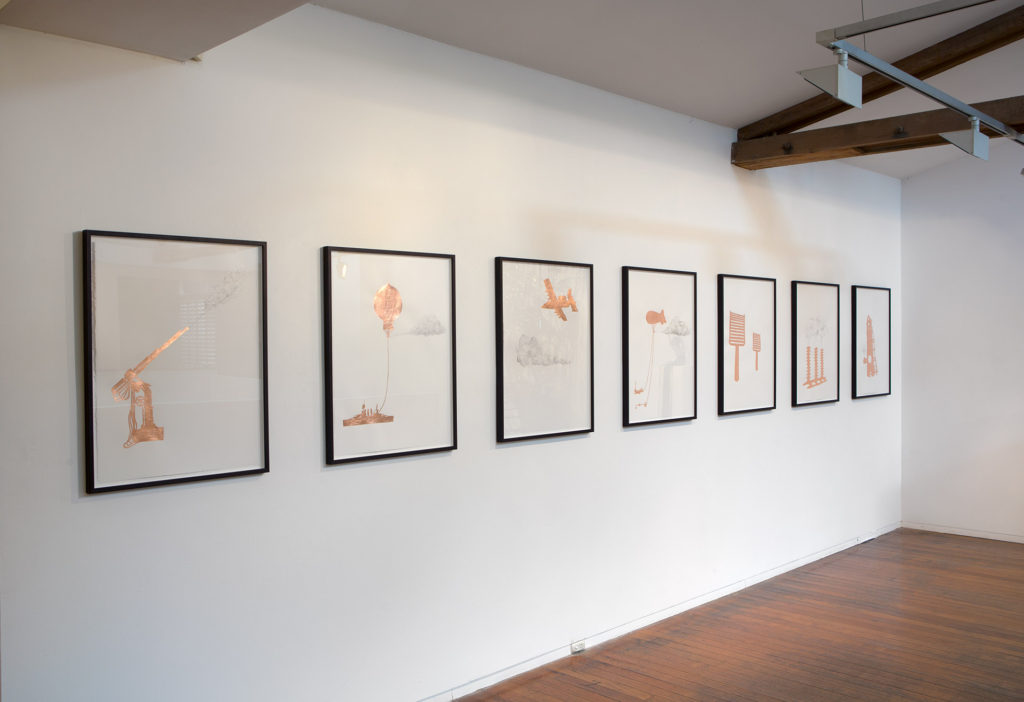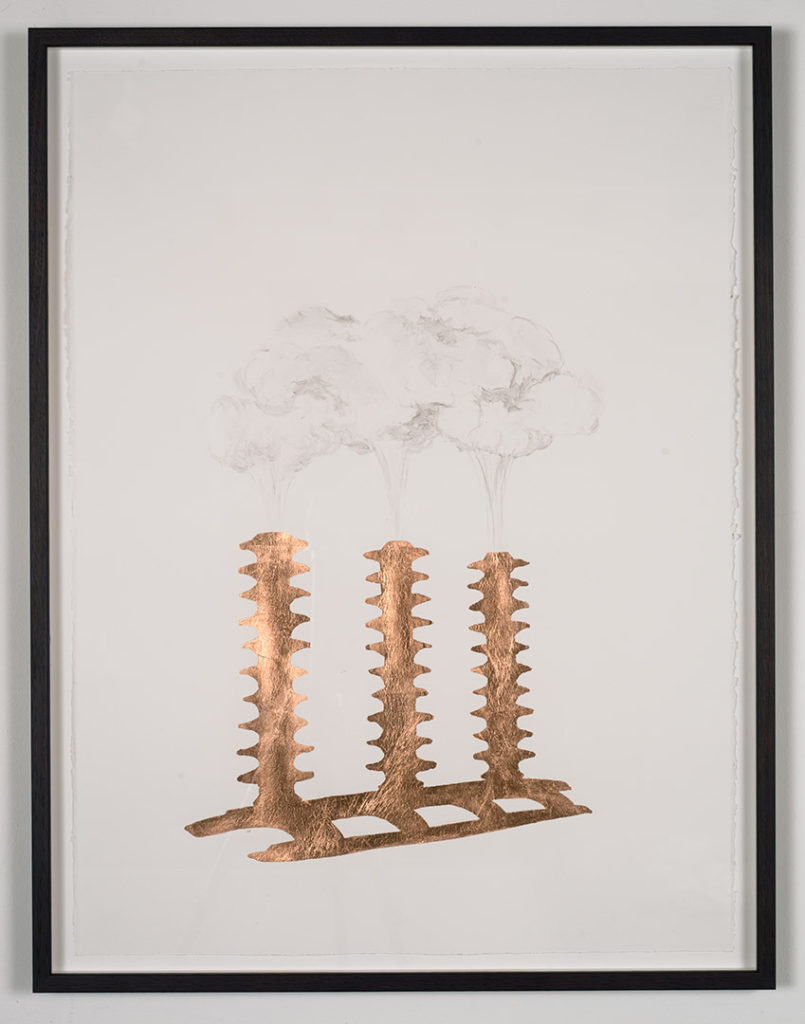Carbon black
This page reflects some of Caroline Rothwell’s projects created from the emissions of industry, technology and nature’s wild fires, ever increasing due to anthropogenic climate change.
Carbon Emission 6, aperture, 2021, single channel digital video, loop, exhibited in The National 2021: New Australian Art, Museum of Contemporary Art
Carbon Emission animation series showing at Ngununggula through a door peep hole and on a screen behind a window installed in gallery wall
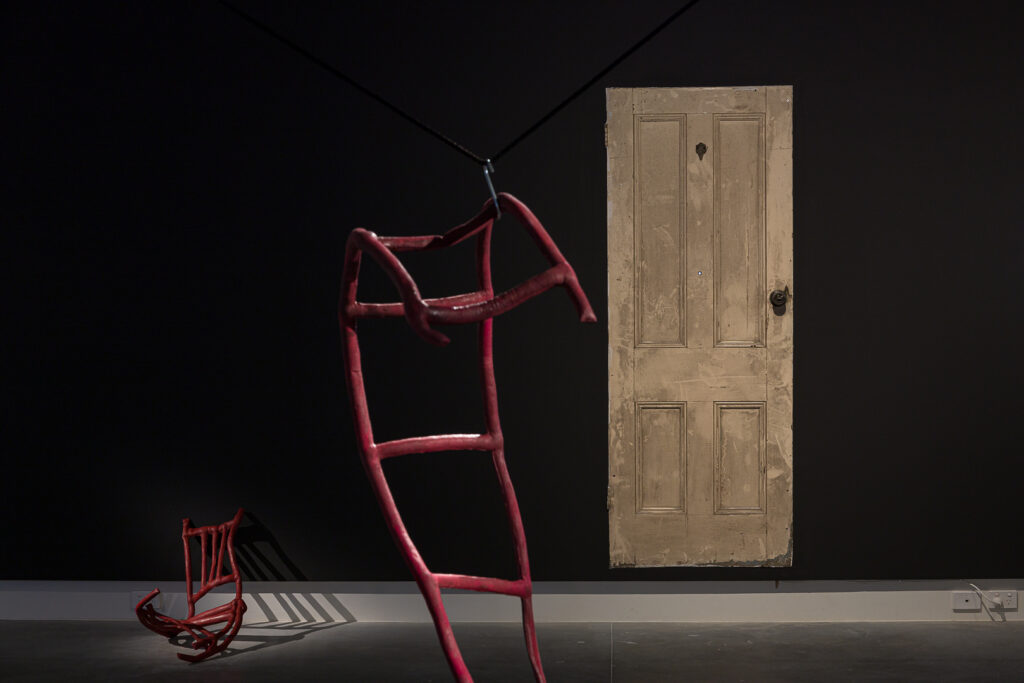
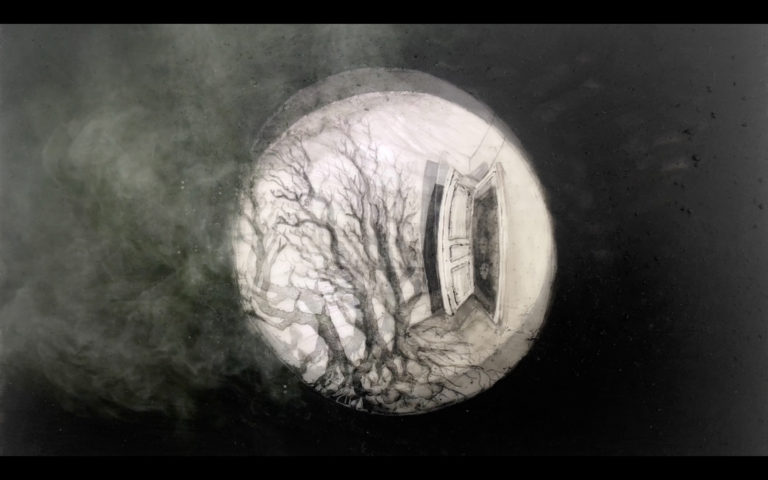
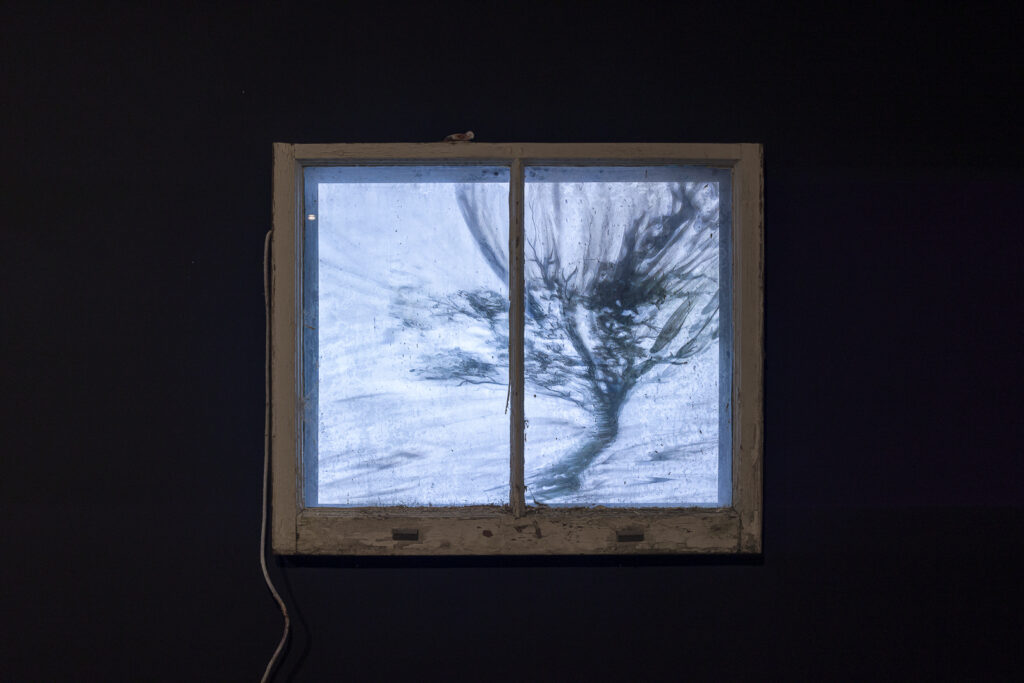
Carbon Emission 5, Constructavist Rococo, 2021

For The National 2021: New Australian Art, Rothwell presents three animated short films from her Carbon Emission series.
Rothwell has been starting conversations about the natural world with her work for the past three decades. Flora, fauna and weather systems have provided subjects, while recently she has focused on carbon emissions. The three animations commissioned for The National 2021 are painted with lamp black, or soot – the residue from fossil fuel emissions, mixed with a binding agent. Rothwell scrapes the soot from car exhaust pipes; she’s found that different cars produce different colours, depending on the efficiency of the engine and the rustiness of the pipe. She mixes the local emissions with others from the industrial smokestacks of Philadelphia, as well as soot from the 2019 New South Wales bushfires – climate change doesn’t respect national borders, and we are all in it together. In her animations, literally conjured forth from smoke, a tree grows inside a bare room, glimpsed through an aperture which emits tendrils of gas along with free-floating numbers denoting measurement. In another, curlicues of smoke billow forth from rococo-styled fretwork – pointing to the period of history from which human emissions of carbon dioxide began to be measurable.
Shepparton Art Museum
“Invited by Shepparton Art Museum to create a work for its DRAWING WALL, Rothwell asked local community members to collect the accumulations of carbon residue from their car exhausts. These she mixed with a binder to produce specimen drawings of Murray-Darling endangered species.
…Rothwell’s idiosyncratic approach to mapping sites finds a different manifestation in the Murray/Darling drawings and the Murray/Darling Vista 2012. These works identify localities by a dual strategy of medium and content.”
Anne Loxely, Borderlands, 2012

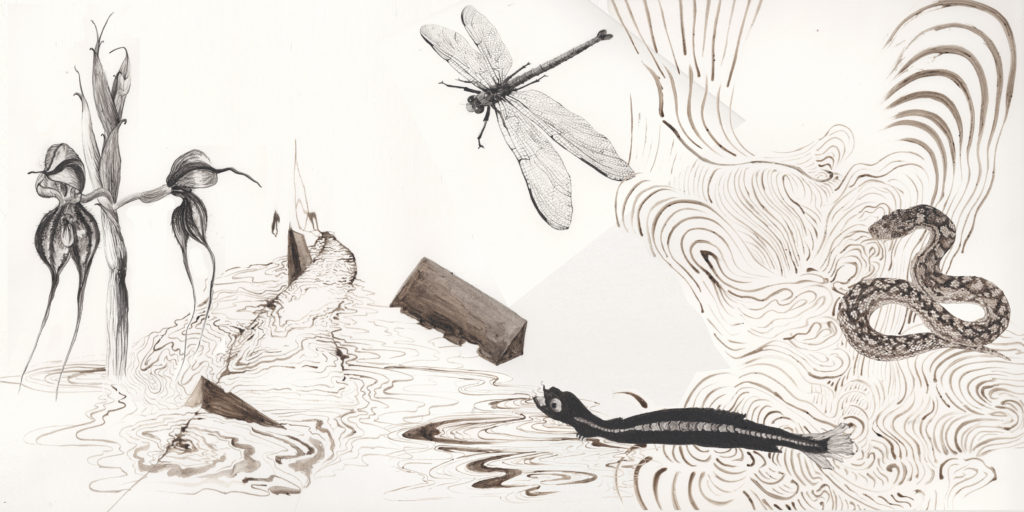
New York Summer Weeds
“Artists use their skills and imagination to take on the issue of climate change. In Tipping Points they use a variety of mediums… Some have been partnering with scientists and environmental organizations. Others take a more poetic and imaginative approach to confront the single biggest challenge of our time.” curator Amy Lipton
Exhibited at: Art Omi International Arts Center, New York, 2014;
Quo Vadis: the last drawing show, 2014 UNSW Galleries; Tipping Points: Artists Address the Climate Crises, Gallery Bergen, New Jersey, curated by Amy Lipton, in conjunction with the 2015 United Nations Climate Change Conference, COP 21
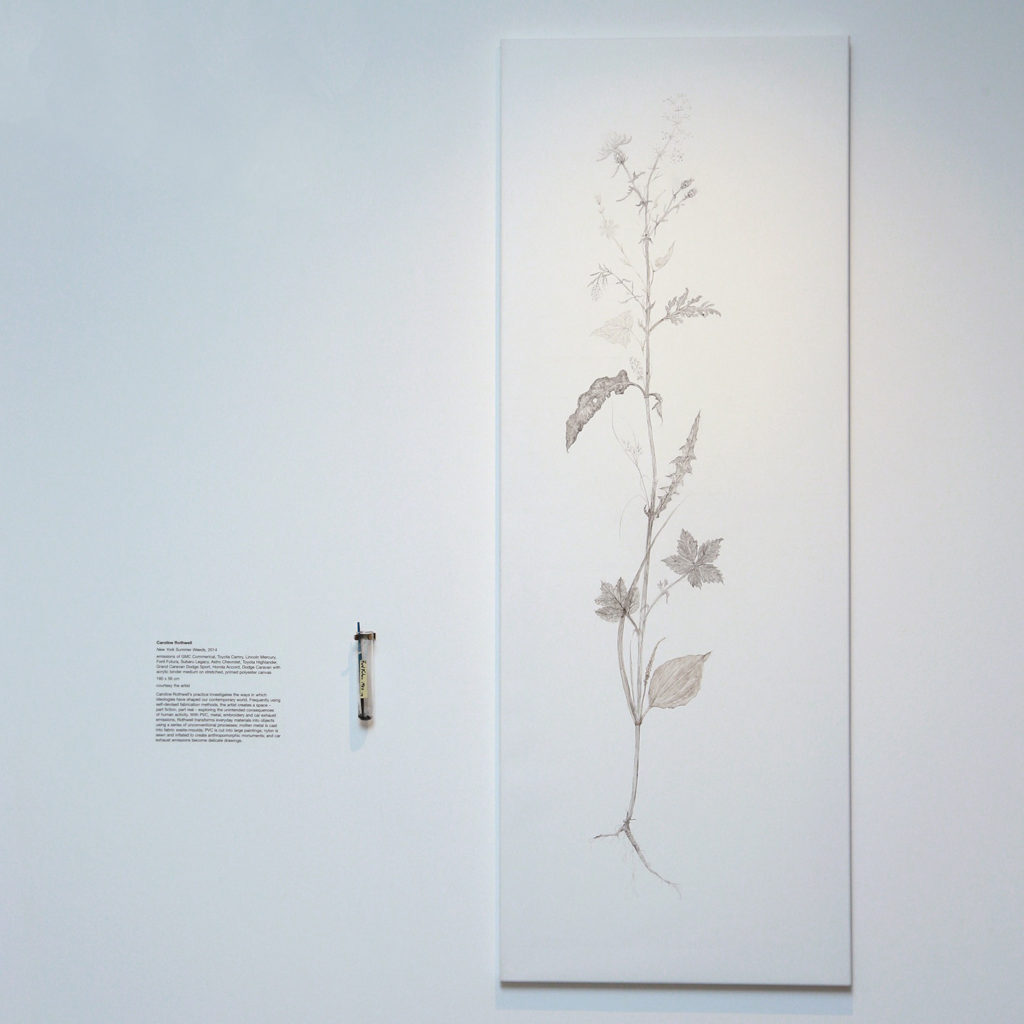
Habit, Temple Contemporary, Philadelphia
Through a recent collaboration with Temple Contemporary and the Office of Sustainability, Rothwell has created an exterior wall drawing using carbon soot emitted from one of the smokestacks located at Temple University.
Robert Blackson, director of exhibitions and public programs for Temple Contemporary, met Rothwell in New York during studio visits through a residency program. He was immediately intrigued by the messages and concepts used in her artwork and wanted to bring the idea of using carbon emissions to Temple.
Kathleen Grady, Temple’s director of sustainability, took deep interest in the goal of the mural. “We really think it helps frame the dialogue of carbon as a building block of life but also as this force that we’re dealing with in terms of climate change.”
The image Rothwell created using soot is of a threatened Philadelphian plant species known as the Juncus alpinus. The smoke stack emission soot was mixed with water so, as Blackson says, “I believe it will only have a lifespan of just a few months. The intention is that it will go away—it’s that sense of a cycle…”
Habit at Temple Contemporary, Philadelphia, from September 2015. In conjunction with ARTCOP21 Global Climate Art Festival, September-December 2015
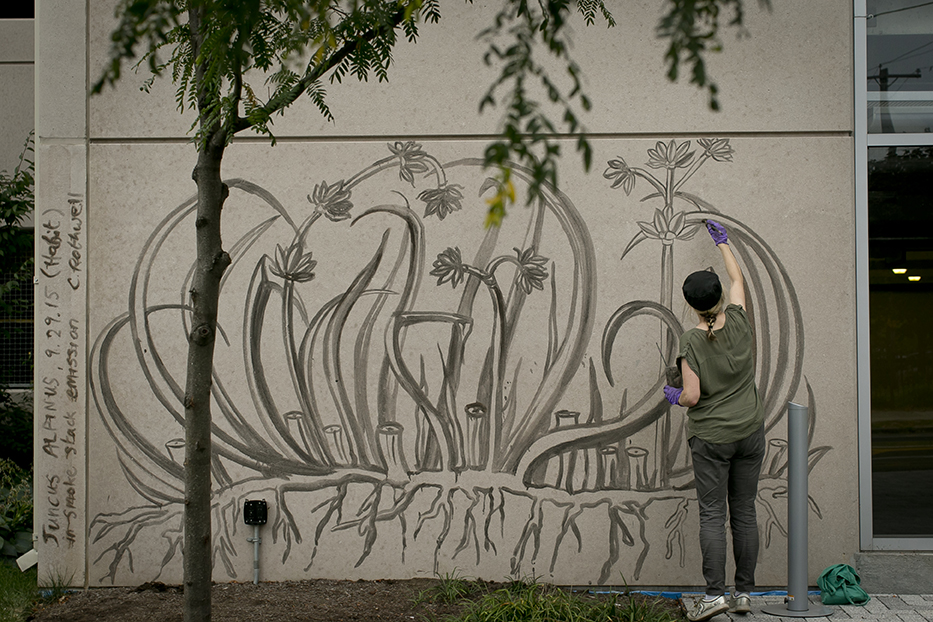
Weather Maker
“The subject of these works is technology… What is documented here is a nascent industry: weather modification and climate control. Devices that Caroline Rothwell has studied include Artificial Trees, Cloud Whiteners, the mysteriously named Mission 2013 Air Scrubber and SPICE: Stratospheric Particle Injection for Climate Engineering. All these technologies are the serious subject of research and development. Seeing that the atmosphere does not respect national borders, the potential market for such devices is by definition global. The hubris behind such projects—that only technology can solve technology’s problems—is familiar.
The artist can’t do much in response to this hubris other than set an example, bringing their production of materials back to a domestic scale… producing her own inks. Lamp black, for instance, is a pigment produced from the incomplete combustion of what, in a 1920s American Encyclopedia, were poetically called “the dead oils”, or what we call ‘fossil fuels’. It is a fine pigment, lightly carcinogenic in rats and with a tendency to stain. A common ingredient from Renaissance painting to 19th century printing, it can be produced by carefully burning oil cold pressed from the kernels of peaches, or scraped from the exhaust of a typical family car, which is where Rothwell gets her supply from. Contemporary climate modification technologies are usually presented with high-techno-triumphalism; Rothwell shows them as perverse 19th century fantasies, products of an juvenile industrial revolution in a state of hormonal disarray…
Rothwell’s work makes it impossible to ever look at Duchamp’s the bride stripped bare by her bachelors, even in the same way—all of a sudden Duchamp’s masterpiece of sexual innuendo becomes retrospectively transformed into a giant weather station, a hot and heavy harbinger of the anthropocene.
This is the fertile stress at the heart of Caroline Rothwell’s practice. A meticulous researcher, she produces work that looks artisanal and figurative, but is ultimately conceptual and process driven.”
Adam Jasper is a postdoctoral researcher at the Institute for the History and Theory of Architecture at ETH Zurich, where he is also the editor of gta Files. He contributes regularly to Cabinet and Artforum.
